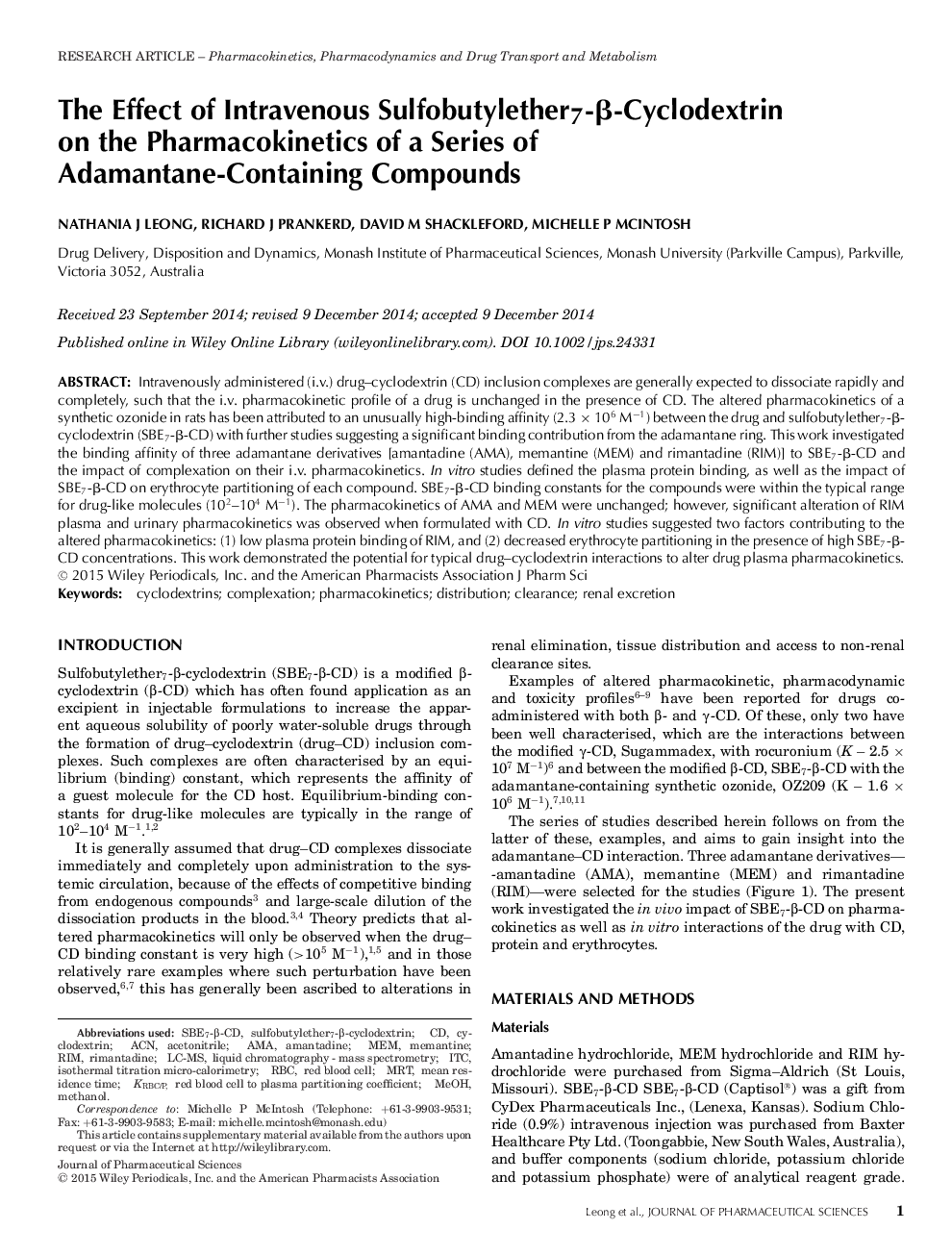| Article ID | Journal | Published Year | Pages | File Type |
|---|---|---|---|---|
| 10162140 | Journal of Pharmaceutical Sciences | 2015 | 7 Pages |
Abstract
Intravenously administered (i.v.) drug-cyclodextrin (CD) inclusion complexes are generally expected to dissociate rapidly and completely, such that the i.v. pharmacokinetic profile of a drug is unchanged in the presence of CD. The altered pharmacokinetics of a synthetic ozonide in rats has been attributed to an unusually high-binding affinity (2.3 à 106 Mâ 1) between the drug and sulfobutylether7-β-cyclodextrin (SBE7-β-CD) with further studies suggesting a significant binding contribution from the adamantane ring. This work investigated the binding affinity of three adamantane derivatives [amantadine (AMA), memantine (MEM) and rimantadine (RIM)] to SBE7-β-CD and the impact of complexation on their i.v. pharmacokinetics. In vitro studies defined the plasma protein binding, as well as the impact of SBE7-β-CD on erythrocyte partitioning of each compound. SBE7-β-CD binding constants for the compounds were within the typical range for drug-like molecules (102-104 Mâ 1). The pharmacokinetics of AMA and MEM were unchanged; however, significant alteration of RIM plasma and urinary pharmacokinetics was observed when formulated with CD. In vitro studies suggested two factors contributing to the altered pharmacokinetics: (1) low plasma protein binding of RIM, and (2) decreased erythrocyte partitioning in the presence of high SBE7-β-CD concentrations. This work demonstrated the potential for typical drug-cyclodextrin interactions to alter drug plasma pharmacokinetics.
Related Topics
Health Sciences
Pharmacology, Toxicology and Pharmaceutical Science
Drug Discovery
Authors
Nathania J. Leong, Richard J. Prankerd, David M. Shackleford, Michelle P. Mcintosh,
